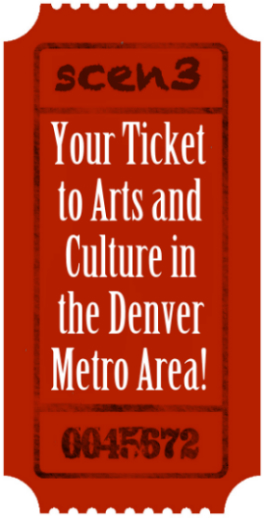3rdLaw Dance/Theater’s “Elision Project Volume 4”
A review by Gwen Gray, with photos by Heather Gray/Gray Area Dance
Over the years, 3rd Law Dance/Theater has become known for navigating on-stage obstacles. They’ve glided across a stage filled with bouncing ping-pong balls, held handstands atop typewriters, and woven themselves in and out of a collection of cardboard boxes and towers of metal cubes. But those were self-imposed creative challenges.
This year, 3rd Law, like virtually all performing arts groups, had to face the impossibilities imposed upon them by the pandemic. Yet in characteristic fashion, they’ve managed to step through, over and around the restrictions and emerge triumphant for their first in-person performance since the pandemic began.
The setting of Thursday night’s performance of “Elision Project Volume 4” (“EPV4”) was a feat in itself: the troupe adopted a multilevel parking garage below a shopping mall and transformed it into a theater for the evening (and for the entire four-night run). Guests brought their own folding chairs and placed them on assigned numbers marked on the first floor of the garage. The evening’s program then worked its way up the ramps of the parking garage, with the audience in tow, and on each level, the company constructed a mobile theater of sorts, with a new set of lighting, music, props, marks and sets.
To pull this off, artist director Katie Elliott enlisted the help of co-producer Mara Driscoll, who returned to Boulder while her job at the Metropolitan Opera Ballet was put on hold due to Covid-19 shutdowns. (Driscoll also performed as a dancer in “EPV4.”)
“I’ve always been interested in nontraditional spaces.” Elliott said in an interview ahead of the performance. “I think people are up for the adventure of it.”
Indeed, the audience was audibly giddy as the show got underway, and then rapt as the Colorado Saxophone Quartet began playing the brisk, firefly-flitting notes of Phillip Glass’ String Quartet No. 3, arranged for saxophone quartet. The music reverberated between the garage’s cement walls, and the dancers, in red tops that stood out against the industrial backdrop, found their places and began a series of ritualistic movements, searching the ground, snapping their fingers, drawing their sneakers across the pavement for a “shhhhing” sound, and drawing circular and clock-like patternswith their arms. They never touched one another yet collectively held a tension characterized by repetition and a sense of searching.
This mood contrasted with the playful choreography of the following piece, in which the dancers were connected by long bungee ropes, moving together to the rhythms of the Boulder Samba School’s Bateria Alegria band (with a sound so boisterous that earplugs were provided in advance). The dancer spun against, bounced off, pulled and snapped the cords — a clever device for harnessing each other’s momentum while still maintaining the physical distance that was required when the work was choreographed. At times, multiple ropes crossed midair, like a giant game of cat’s cradle and suggestive of the simple pastimes so many of us rediscovered during quarantine: knitting, jumping rope, crochet, puzzles.
The roving drum beat continued on up to the second level as the samba band led the audience, itself dancing, to the next “stage.”Here, a cinematic arrangement of a half-dozen cars were positioned on either side of the drive with their headlights pointing to the yellow center line. The band departed, and the chiming and pulsing contemporary songs by Gregory Taylor and Pansonic poured from the vehicles’ speakers, the perfect bass-heavy backdrop for the dancer’s sinewy, low-to-the-groundmotions. With one tender gesture — a dancer resting her head on another’s shoulder — the audience’s eyes were shining, understanding the long-denied importance of human touch in this artform.
As audience and dancers emerged onto the rooftop of the garage— first passing through a series of hanging gauze curtains andflickering white candles for a “palate cleansing” interlude — 3rdLaw musical director and vocalist Paul Fowler’s ethereal voice rang out from above.
Fowler had been anticipating the acoustic appeal of the garage with glee, calling the effects “sonic candy.”
“You can’t film or capture this and have it come anywhere close to what it sounds like in person,” he said. “Those are thrilling opportunities.”
Perched on the garage’s highest point and lit from below, Fowler chanted St. Francis of Assis’ “Laudes Creaturum (Praise of the Creatures),” a work that hails the natural world. Under the stars in the night air, the dance troupe ascended the final ramp together in sheer, flowing white costumes moved by the breeze.As one dancer struck out from the others, the rest of the group clung to the earth en masse, until eventually, all had come forward together, swaying and supporting one another through intricate sequences and lifts. The audience was silent.
The Elision Project delivered what many of us have been craving, as Zoom fatigue has set in and audiences begin to seek out in-person performances: the tangible electricity and magic of a live, in-person and site-specific performance that will never be witnessed the same way again.
“Talk about an ephemeral art form,” said Elliott. “Here it is.”
“Elision Project Volume 4” runs through May 23 at the parking garage adjacent to the Century Theater at the Twenty Ninth Street shopping mall. Tickets are available from 3rd Law’s website.














Trackbacks/Pingbacks
[…] dances from the now-famous parking garage show are included. “You Are Here,” choreographed to a flitting Phillip Glass quartet #3 (string […]